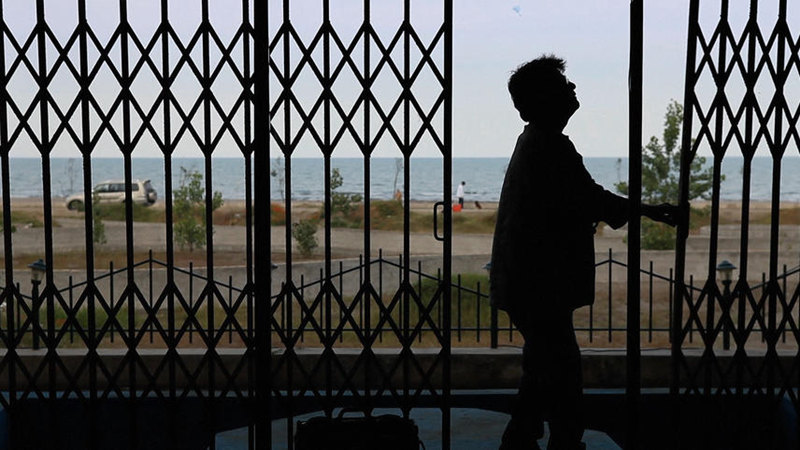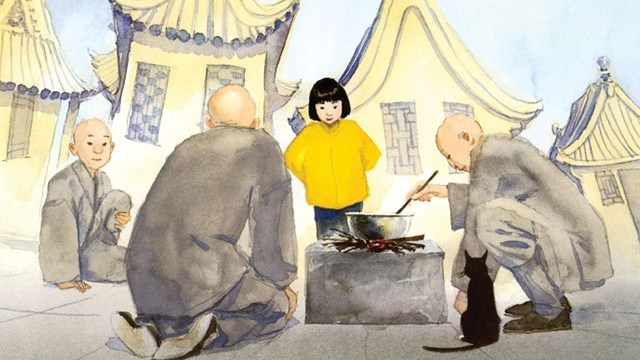The reader may recall that the Disney animation department experienced some down time between their Golden Age in the late 1930s, 40s, and 50s and their Renaissance in the late 1980s and beyond. In other words, the 1960s and 70s were not good to them. Walt Disney’s “The Black Hole” from 1979 was a good description of the condition of their children’s animated movies. Anyway, Disney’s animated “Robin Hood” comes from this period, 1973, and it’s a fair indication of why things were not so rosy for the studio back then.
Disney’s “Robin Hood” replaces the characters of legend with animals, which in and of itself is not a bad idea. But it uses rather bland characters or ones repeated from earlier films, bland songs and music, bland adventures, and bland artwork to tell its story. The result is not an entirely bad film, but something less than scintillating, too. Sort of, you know, bland.
Put it this way: Disney did a better job with the Robin Hood tale some twenty years earlier with their live-action “Story of Robin Hood and His Merrie Men.” That one was nowhere near as rousing an adventure as the older Errol Flynn version, but it had more energy and life than this tepid cartoon remake.
You know the story. King Richard has gone on a Crusade to the Holy Land, leaving England in the charge of his treacherous and greedy brother, Prince John, who is taxing the populace to death. A preface tells us that “Robin Hood was the people’s only hope. He robbed from the rich to feed the poor. He was beloved of all.” Beloved of all? You’d expect Mickey Mouse in the role, but instead Robin is a wily fox. Several familiar incidents make up the bulk of the plot: Robin and his men robbing Prince John, Robin’s relationship with Maid Marian, the big archery tournament, and a daring escape from Prince John’s castle. What’s more, all of the expected characters are here, albeit in animal guise, and recognizable actors voice most of them. To be ensure that you know who they are, Disney even identifies them at the beginning of the picture.
Robin Hood is, as I said, a fox, elegantly voiced by Brian Bedford. Maid Marian is, appropriately, a vixen, voiced Monica Evans. Then, there’s Little John, a bear voiced by Phil Harris and right out of Disney’s “Jungle Book.” Prince John is a lion, voiced wonderfully by Peter Ustinov. Prince John’s counselor is Sir Hiss, a snake in the grass, voiced by Terry-Thomas. Friar Tuck is a badger, voiced by Andy Devine. The Sheriff of Nottingham is a wolf, voiced by Pat Buttram. Lady Kluck, Maid Marian’s maid, is a chicken voiced by Carole Shelley. And the narrator of the story, Alan-A-Dale, a troubadour, is a rooster voiced by singer Roger Miller. The character voices are quite distinctive, but the script gives the actors almost nothing funny or witty to say, so it’s something of a waste. Moreover, some of the voices are clearly British, while others are plainly American. I doubt that children will mind this, but for adults it can be a little disconcerting.
Then, there are the songs, of course. Hardly a Disney cartoon goes by without songs. Yet even here, the tunes are not particularly memorable. The ones written and sung by Roger Miller are among the best: “Oo-de-lally,” “Not in Nottingham,” and “Whistle-Stop.” There’s a song called “Love,” written by Floyd Huddleston and George Bruns and sung by Nancy Adams, that goes nowhere. And there’s an attempt at the kind of rousing gaiety that Phil Harris injected into “The Jungle Book” with his rendition of Johnny Mercer’s “The Phony King of England, but it, too, seems forced and empty.
Perhaps the most controversial aspect of the film, though, is its artwork. Disney chose, for whatever reason, to go with a simpler animation style than usual for them in a big, theatrical release. Frankly, it looks cheap and is not up to the studio’s standards. In fact, it looks a lot like the work for their “Winnie the Pooh” short subjects and for many of their television productions. The characters lack much depth or expression. And although the background paintings sometimes look good (the opening scenes in the forest, for instance, and Prince John’s castle), they are only intermittently detailed or polished, and they are often absent altogether.
To make matters worse, much of what passes for plot is mere movement, mostly slapstick chasing around. The uninspired soundtrack music doesn’t help much, either, making the whole enterprise seem even more like an ordinary children’s TV show. The director, Wolfgang Reitherman, did better work in “One Hundred and One Dalmatians” “The Sword and the Stone,” and “The Jungle Book.”
There are precious few thrills involved with this animated “Robin Hood,” few moments of humor, very little romance, and for action only running to and fore. It’s bright and colorful, to be sure, with an emphasis on cuteness throughout, so tots will probably like it. And if you saw it as a kid, you might find it interesting for nostalgic reasons. Everyone else might want to go with Disney/Pixar’s 2006 “Cars,” released on DVD at about the same time as “Robin Hood.” The difference in quality is remarkable.
Video:
The movie’s intended theatrical ratio of 1.75:1 nicely fills out a 1.78:1 widescreen television, although I sensed some slight cropping of the image at the top and bottom of the screen. The problem with what the slipcover boasts as a “new digital transfer” is that it looks sort of rough. It’s not just grainy–it is that in places–but just plain rough. Colors are not as deep or as bright as in a newer Disney animated film or one that the studio has fully restored. Plus, there are any number of age signs in the print, various spots and flecks. So, not only is the artwork mediocre, the print and the transfer are pretty ordinary, too.
Audio:
Did I say the video was ordinary? Ditto for the sound. The Dolby Digital 5.1 audio is certainly clean and clear enough, but it doesn’t do much more than reproduce a midrange response in the center channel. The stereo spread is narrow, the bass and treble are limited, the dynamics are soft, and the surrounds are almost devoid of content. Voices show up OK most of the time, but there are occasions when they appear to be in an entirely different acoustic from the rest of the aural effects.
Extras:
Among the several bonus materials on this “Most Wanted Edition” is, first, an alternate ending, about four minutes long, and done up mostly in still, rough sketches. Next is a “Disney Song Selection,” with three songs from the movie and on-screen lyrics. There is also an option that provides on-screen lyrics within the movie. Following that are two games, an “Archery” trivia game in which the player answers a series of questions about the film and a “Rescue Maid Marian” game in which the player has to find hidden objects in various locations related to the film. Then, there is a stills gallery of artwork and a video gallery of artwork from the film. Finally, there is a seven-minute, 1933, black-and-white bonus cartoon, “Ye Olden Days,” starring Mickey and Minnie Mouse in an adventure that surpasses the one in “Robin Hood.”
To conclude the bonus items, there are fifteen scene selections and a chapter insert, English, French, and Spanish spoken languages, English captions for the hearing impaired, and Sneak Peeks at eight other Disney titles. The keep case comes enclosed in a handsomely embossed slipcover that misrepresents the movie’s animation as looking much better than it actually appears in the movie.
Parting Shots:
The Disney filmmakers seem to have had only kids in mind when they made “Robin Hood,” rather than aiming their arrows a little higher and hitting a few older folks, too. I have no doubt youngsters will enjoy the film, especially because it’s filled with all manner of cute, cuddly creatures. But it will probably bore most grown-ups to tears. I’d rate the movie a 6/10 for younger children, a 4/10 for adults.


